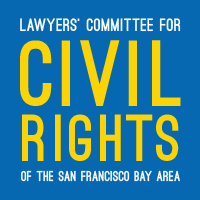Election ordered for council districts
Original article appeared in The Ceres Courier.
It’s official: Ceres voters will be going to the polls on Nov. 3 to say yay or nay on whether to form City Council districts and elect councilmembers by those districts.
Currently candidates run at large, meaning they can live anywhere in the city limits with the top vote getters being elected to open slots. That system would be abolished, if voters approve, and candidates will have to run for seats assigned to four areas of the city.
The fifth member of the City Council, the mayor, will still be elected on an at-large basis.
The ordering of the election was approved in a 3-2 vote on Monday, June 8. Voting against the election were Council members Linda Ryno and Mike Kline.
Ryno reiterated her opposition to the council district election out of protest for the way the boundaries were drawn. A consultant helped carve out the districts with input from the council and the public. The majority on the council wanted to place each current member in their own district to avoid the potential of running against one another. But creating those separate districts became problematic because Ken Lane, Kline and Ryno all live relatively close together in the heart of Ceres. The result was that Ryno’s assigned district extends all the way over into the west side of Ceres, which also happens to be the only district that has a majority Latino population.
Kline also does not like the proposed council districts as drawn because his district also runs west of the freeway while his home is east of Highway 99.
If Ceres voters reject the proposed change, however, the city will have no choice but to acquiesce to the 2002 California Voting Rights Act or face a lawsuit and the potential loss of millions of dollars fighting council districts.
Ceres resident Leonard Shepherd expressed his resentment that the will of the people will be trumped even if they vote against district elections.
“I just think we need to be honest with the citizens and put a disclaimer in there that … if you vote against it, you’re gonna get it anyway. Tell them it don’t make a damn bit of difference.”
Bret Durossette’s District 3 covers northeast Ceres, including areas east of Moffet Road as well as Eastgate.
Mike Kline will be in District 4 which covers a block around Smyrna Park southward to Highway 99 and leaping across the freeway to take some areas of southwest Ceres, including Marazzi Lane, Sungate Drive and Daisy Tree.
The federal Voting Rights Act demands that neighborhoods that are heavily populated by a protected class – Latinos, African-Americans, Native Americans or Asian-Americans – cannot be divided in a way that would reduce their ability to elect their preferred candidates.
If voters approve the measure, the first district City Council election in Ceres will be in 2017 when two council seats are up for grabs. The first full district election would take place in 2019.
The boundaries would be changed after the U.S. Census is taken every decade, the next one in 2020.
Representing the Latino Community Roundtable (LCR), Maggie approached the council in 2013 asking the city to move to district elections, citing how Modesto fought the change and lost. LCR, she said, has never been intending to sue Ceres to make the change.
A group called the Lawyers’ Committee for Civil Rights forced the Ceres Unified School District to go to district elections in 2009 after threats of being sued under the California Voting Rights Act. The nonprofit advocacy group had filed a lawsuit on behalf of Latino voters, charging that the district’s at-large method of election was racially polarizing and violated the California Voting Rights Act (CVRA).
